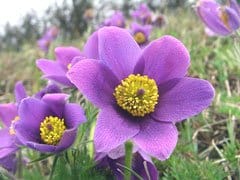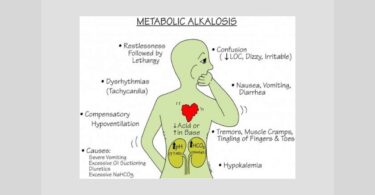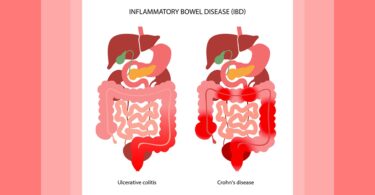What is a mole?
Moles are small growths on the skin which develop from melanocytes, the pigment-producing cells in the skin. Moles can appear anywhere on the skin and are the most common skin growth. Moles uaully appear as dark brown spots on the skin which are either flat or raised. They may vary in size, shape, number, color, and type. Moles may develop at any age.
Moles are also known as Nevus; nevi are the plural form of the word, they are a cluster of melanocytes that appear as brown spots on the skin. Nevus (or naevus) is a general term that refers to a number of different, usually benign, pigmented lesions of the skin. Most birthmarks and moles fall into the category of nevi. The nevus cells make the nevus. The great majority of moles are harmless, but in rare cases, moles may become cancerous.
Homeopathic Treatment of Moles/Naevi:
Homeopathy treats the person as a whole. It means that homeopathic treatment focuses on the patient as a person, as well as his pathological condition. The homeopathic medicines are selected after a full individualizing examination and case-analysis, which includes the medical history of the patient, physical and mental constitution etc. A miasmatic tendency (predisposition/susceptibility) is also often taken into account for the treatment of chronic conditions. The medicines given below indicate the therapeutic affinity but this is not a complete and definite guide to the treatment of this condition. The symptoms listed against each medicine may not be directly related to this disease because in homeopathy general symptoms and constitutional indications are also taken into account for selecting a remedy. To study any of the following remedies in more detail, please visit our Materia Medica section. None of these medicines should be taken without professional advice.
Reportorial rubrics
[Kent] Skin, Moles;
Skin, Discoloration;
Skin, Excrescences.
[Murphy] Skin, Moles;
Skin, Discoloration;
Skin, Excrescences.
[Boericke] Skin, Nevus
[Boenninghausen’s] Skin, Naevus
Homeopathy Remedies :
Pulsatilla, Aceticum acidum, Floricum acidum, Phosphorus, Thuja occidentalis, Calcareacarbonica, Sulphur, Carbo vegetabilis, Graphites, Lycopodium, Petroleum, Sepia, Radium bromatum, Carcinosin, Medorrhinum, Cundurago, Platina.
Materia medica
Pulsatilla:
Lady with weeping tendency, having changeable mood. Little flat, brownish patches about the size of the thumb nail,
Aceticum acidum:
Patient is anemic with grate debility. Birthmarks [nevi]. Skin dry and hot; red spot on left cheek and drenching night sweats. Skin is pale, waxy œdematous. Burning, dry, hot skin, or bathed in profuse sweat. Diminished sensibility of the surface of body. Pale colour spot.
Floricum acidum:
Nævi; burning and itching, worse from warmth. Profuse, sour, offensive perspiration. Mentally elated and gay.
Phosphorus:
Tall, slender weak people, narrow chest, with thin transparent skin; with great nervous debility and emaciation. 
Thuja occidentalis:
Itching and stinging moles. Skin looks dirty. Nevus brown or brownish-white spots here and there; eruptions only on covered parts, burn after scratching. Great brown spots, like liver spots, form upon the abdomen. Hydrogenoid constitution. Rapid exhaustion and emaciation. Emotional sensitiveness. Mole grow as red, smooth, spongy
Calcarea carbonica:
Moles as if red, glistening, lenticular spot; may become bluish. Skin looks dry and pale. Sensibility of skin in general. Scrofulous constitution. Great sensitiveness to cold.
Sulphur:
Smooth, moist nevi. Birthmarks. Brown colored mole. Itching spot after scratching is very painful. Burning all over the body. Liver spot on the back and chest. Itching and burning of the part aggravated by washing and scratching. Dirty, filthy people. Aversion to being wash. standing is the worse position for him which is always uncomfortable
Carbo vegetabilis:
Birthmarks. Moist skin; hot perspiration. Spidery nevi. General itching on becoming warm in bed in evening. Rose colored, burning spots; smooth to touch. Patient is sluggish, fat, lazy, and has a tendency to chronicity in his complaint. Must have open air.
Graphites:
Moles. Skin rough, hard, persistent dryness. Denuded, raw spot in children. Patient is timid, unable to decide. Takes cold easily.
Lycopodium:
Violent itching. Skin becomes thick and indurate. Nævi, erectile tumors. Brown spots. Death spots in old people. Offensive secretions. intolerant to cold drinks craves every thing warm. Intellectually keen people; having weak muscular power, thin, earthy complexion.
Petroleum:
Moles moist; itching at night. Skin dry, constricted, very sensitive, rough and cracked, leathery. Marked aggravation from mental emotions.
Sepia:
Naevi; smooth, mottled or spidery. Offensive odor of skin. Very sad. Weeps when telling symptoms. Brownish red spot.
Radium bromatum:
Nevi as small spot on the skin. Severe aching pain, with restlessness, better on moving. Great weakness. Itching all over the body, burning of skin. Moles are hard to touch with outward growth.
Carcinosin:
It is claimed the Carcinosin acts favorably and modifies all cases in which either a history of carcinoma can be elicited, or symptoms of the disease itself exist. Moles are painful, with offensive discharge and tend to bleed.
Medorrhinum:
Red mole. Red spiderlets on face. Copper colored spot. Intense and incessant itching; worse at night and thinking of it.
Cundurago:
Birthmarks. nevi smooth to touch Smooth. Melanoma.
Platina:
Spidery nevi, birthmarks. Itching skin; not relieved by scratching. Offensive odor of skin. Localized numbness and coldness. Pains increases and decrease gradually.
Prevention
- Avoid exposure to the sun; apply sunscreen lotion on uncovered body part. Cover up with hats, long sleeves, and clothing to protect from UV rays.
- Check your moles, if changes occur consult your doctor.
- Moles may occour due to potassium deficiency. The real cure (or prevention) is to eat foods that contain potassium like apple, cider, vinegar. A balanced diet high in vitamins A, vitamin E andvitamin C can improve the immune system.
Types of moles:
Moles are divided into-
1. Common acquired nevi.
2. Congenital nevi
Common acquired nevi are the most common type, as the name itself suggest. The numbers of these nevi increase as a person ages and they remain throughout the life.
Common acquired nevi
Common acquired nevi are further divided into:
- Junctional nevi – are found at the skin’s dermal-epidermal junction. They are flat since they have few cells in their structure. They are darkest shades of brown and some of them may become malignant melanoma.
- Compound nevi – the cells are found in both layers dermis and epidermis of the skin. Compound Nevi are lighter shades of brown and tend to be a bit raised up off the skin. These nevi might also have both a raised and flat component to them.
- Intradermal nevi – the cells are found in the dermis only. They are elevated and look like a dome shape and may even be the same color as the skin and difficult to distinguish from surrounding areas.
Congenital nevi [birthmark]
It may occur in one out of every 100 people, sometimes more than that. These moles will last a lifelong. It may be large or small in size. Their color ranges from tan to a brown color or even black. Most often, there is also a hair raised out of the middle of the mole. These moles can also become melanoma just like common acquired moles. Giant congenital nevi (picture) which cover a large area of the skin; very rare occur in approximately one out of every 10,000 births.
What causes moles?
Following factors are supposed to be responsible:
- Some people are born with moles. Other moles appear over time.
- Sun exposure seems to play a role in the development of moles.
- Heredity – many families have a type of mole known as dysplastic (atypical), which can be associated with a higher frequency of melanoma or skin cancer.
- Moles may be due to potassium deficiency.
- Melanin is a natural pigment that gives your skin its color. It’s produced in cells called melanocytes, either in the layer of the skin epidermis and dermis; it is distributed evenly, to the surface cells of skin, but sometimes melanocytes grow together in a cluster, giving rise to moles.
- Benign moles develop from an excess accumulation of melanocytes. In rare cases, a benign mole, especially one that is large and varied, may turn into an atypical mole.
What are the signs and symptoms of moles?
- The typical mole is a plain, brown spot, with colors difference, different shapes and sizes; it can be flesh-colored, reddish-brown, medium to dark brown, or blue; vary in shape from oval to round, from pinhead or large enough to cover any body part.
- The surface can be smooth or wrinkled, flat or raised.
- Although most moles develop by age 20, they can continue to appear until midlife. Hormonal changes during adolescence and pregnancy and with the use of birth control pills, moles likely to change larger, darker and become more numerous
- Most people have some benign moles that appear at birth, or during childhood or adolescence.
- Number of moles can also found on the skin [multiple moles/multiple naevi]
Multiple moles
- Benign moles are dark brown or yellow-brown with flesh tone. It may be round or oval with distinct edges. Flat and smooth, but may occasionally become raised, rough, grow hair, or change color over time.
- Common acquired moles change in size, color, shape, texture, or sensation. Mostly large sized. Mixture of colors, often including black; with irregular edges. Surface may be Scaling, flaking, oozing liquid, hard and raised lump, itchy, tender, or painful, abnormally colored skin around it.
Which points need to be considered in the diagnosis of mole?
- Skin examination.
- Taking symptoms and medical history of the patient
- Biopsy may do if cancer is suspected –removal of all or part of the mole to be tested for cancer cells.
- Recognizing the early warning signs of malignant melanoma is important. These include:
- Remember this point when examining moles.
- One half of the mole not resemble with other half.
- Border or edges of the mole are ragged blurred or irregular.
- Color of the mole is not throughout the same or it has shades of tan, brown, black, red, white or blue.
- Diameter of amole is larger than 6mm.
Conventional Treatment of moles:
Mole Removal
Benign moles do not, need to be treated. They can be removed for cosmetic purpose. If malignancy is detected then surgery may be perform along with chemotherapy and radiotherapy according to the case.
Moles, or nevi can be removed by two surgical methods:
* Excision (cutting) with stitches.
* Excision with cauterization (a tool is used to burn away the mole).
Although laser has been tried for moles, it is not usually the method of choice for most deep moles because the laser light doesn’t penetrate deeply enough.
Typically, the doctor or dermatologist may choose excision with or without stitches depending on the depth of the mole and the type of cosmetic outcome desired.





White birthmarks ki medicine btaye.its urgent mam
You are dead wrong abt the sun causing skin cancer..it’s the sun screens you advocate that are a huge causative factor. Get your facts straight!!
Camilla, I actually wrote about the dangers of sunscreen in “There’s Still A Few More Things You’re Doing Wrong!” Click below:
https://hpathy.com/homeopathy-papers/tidbits-part-13-theres-still-things-youre-wrong/
Are there any remedies for raised melanocytic Nevus? Your article covered many but didn’t mention that one.